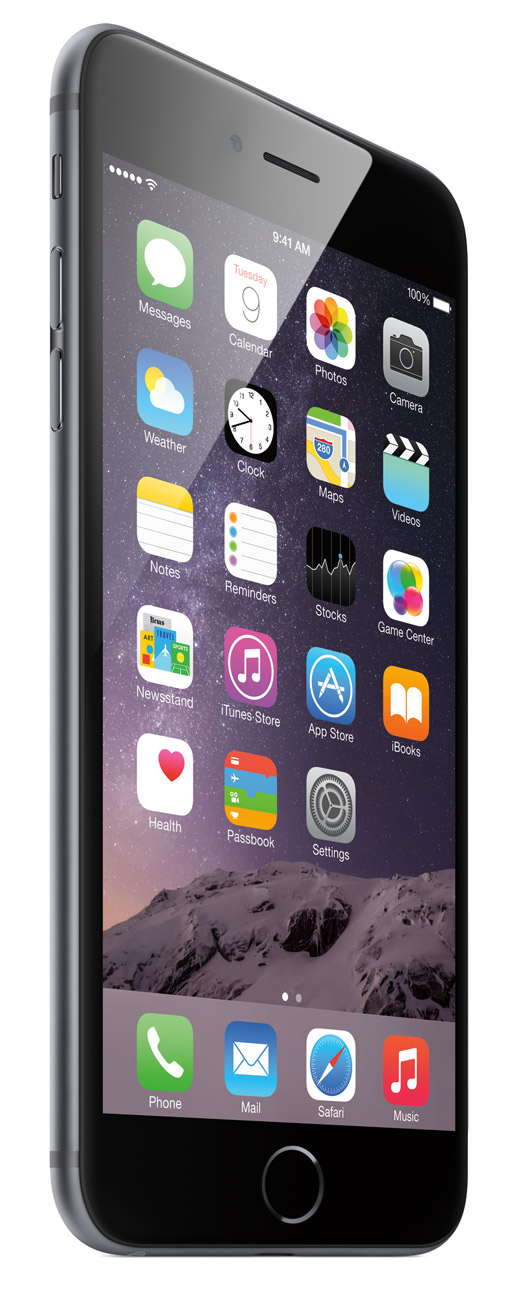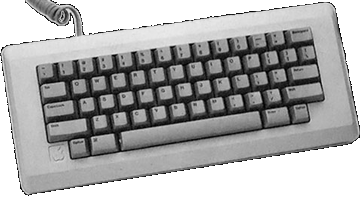iPhone 6 Plus

Essentials
Family: iOS
Codename: ?
Minimum OS: iOS 8.0
Maximum OS: iOS 8.4
Introduced: September 2014
Processor
CPU: Apple A8 (Cyclone v2)
CPU Speed: 1.4 GHz
CPU Cores: 2
FPU: integrated
Bus Speed: ?
Register Width: 64-bit
Data Bus Width: 64-bit
Address Bus Width: 64-bit
Level 1 Cache: 64 kB data, 64 kB instruction
Level 2 Cache: 1 MB on-processor
Level 3 Cache: 4 MB on-processor
Motion Coprocessor: M8
Onboard RAM: 1 GB
Maximum RAM: 1 GB
Video
Screen: 5.5" multi-touch
GPU: 4-core PowerVR GX6450 (via A8)
Max Resolution: 1920x1080 ("Retina")
Video Out: HDMI, VGA (via Lightning adaptors), AirPlay
Camera: 8 MP back (w/dual LED flash), 1.2 MP front
Storage
Flash Drive: 16/32/128 GB
Input/Output
Lightning: 1
Audio Out: stereo 16 bit mini
Speaker: mono
Microphone: mono
Sensors: Touch ID, Accelerometer, Proximity sensor, Ambient light sensor, Three-axis gyro, barometer
Networking
Wi-Fi: 802.11a/b/g/n/ac, NFC
Bluetooth: 4.0
Cellular:
- Model A1522 (GSM, North America)
- UMTS/HSPA+/DC-HSDPA (850, 900, 1700/2100, 1900, 2100 MHz)
- GSM/EDGE (850, 900, 1800, 1900 MHz)
- LTE (Bands 1, 2, 3, 4, 5, 7, 8, 13, 17, 18, 19, 20, 25, 26, 28, 29)
- Model A1522 (CDMA, Verizon)
- CDMA EV-DO Rev. A and Rev. B (800, 1700/2100, 1900, 2100 MHz)
- UMTS/HSPA+/DC-HSDPA (850, 900, 1700/2100, 1900, 2100 MHz)
- GSM/EDGE (850, 900, 1800, 1900 MHz)
- LTE (Bands 1, 2, 3, 4, 5, 7, 8, 13, 17, 18, 19, 20, 25, 26, 28, 29)
- Model A1524 (Global)
- CDMA EV-DO Rev. A and Rev. B (800, 1700/2100, 1900, 2100 MHz)
- UMTS/HSPA+/DC-HSDPA (850, 900, 1700/2100, 1900, 2100 MHz)
- TD-SCDMA 1900 (F), 2000 (A)
- GSM/EDGE (850, 900, 1800, 1900 MHz)
- FDD-LTE (Bands 1, 2, 3, 4, 5, 8, 13, 17, 18, 19, 20, 25, 26)
- TD-LTE (Bands 38, 39, 40, 41)
- Model A1593 (China Mobile)
- UMTS/HSPA+/DC-HSDPA (850, 900, 1700/2100, 1900, 2100 MHz)
- TD-SCDMA 1900 (F), 2000 (A)
- GSM/EDGE (850, 900, 1800, 1900 MHz)
- FDD-LTE (Bands 1, 2, 3, 4, 5, 8, 13, 17, 18, 19, 20, 25, 26)
- TD-LTE (Bands 38, 39, 40, 41)
Location: Assisted, GLONASS, Digital Compass, Wi-Fi, Cellular
Miscellaneous
Battery Life:
- Talk 24 hrs (3G)
- Standby 384 hrs
- Internet 12 hrs (3G/LTE/Wi-Fi)
- Video 14 hrs
- Audio 80 hrs
Dimensions: 6.22" H x 3.06" W x .28" D
Weight: 0.38 lbs.

Introduced in September 2014 alongside the smaller iPhone 6, the iPhone 6 plus represented the most radical change to the industrial design of the iPhone since the iPhone 4; it shifted away from the hard edges of the previous four years back to the rounded corners of the iPhone 3GS, while maintaining the aluminum backing of the iPhone 5. But the most significant change to the iPhone 6 plus was to its dimensions; it was dramatically larger than any previous iPhone, and represented Apple's entry into the "Phablet" market.
The change in dimensions was necessitated by the need to increase the size of the screen (to 5.5", in-line with industry competition) and the desire to maintain the existing 16x9 aspect ratio, and was not without consequence; a new software gesture (the home button double tap) was introduced to allow access to the top half of the screen for smaller hands, and for the first time the power button was moved from the top to the right side of the case, in what proved to be a fairly controversial change. While the iPhone 6 plus was significantly wider and taller, it was also thinner; so thin in fact, that it forced Apple into another design trade-off: the improved camera could not be mounted flush with the otherwise smooth case backing.
The larger screen maintained the aspect ratio of the iPhone 5s and increased the pixel density, resulting in a significantly higher resolution. In an interesting approach, the physical and logical resolution of the screen differed: the physical resolution was 1920x1080 (1080p), too large for the 2x rendering of other retina displays, but too small to accomodate 3x rendering. Apple chose to render at 3x, to a logical resolution of 1242x2208, and then downsample to 1080p. As with previous resolution changes, the iPhone 6 plus maintained several legacy modes for non-optimized apps: those optimized for the iPhone 5 and 5s would be scaled up, and older apps would be both scaled and letterboxed.
The iPhone 6 plus shipped with an Apple-designed A8 chip, which like the A7 was based on a 64-bit architecture, and included improvements both to performance and energy usage. It also included an improved M8 "motion co-processor" which now added support for a new barometer sensor, which measured air pressure as a proxy for changes in altitude.
The iPhone 6 plus included, for the first time, a near field communication (NFC) chip which, in conjunction with Touch ID, enabled a fingerprint-authenticated payment system dubbed "Apple Pay". With launch-day support from a number of banks and vendors, Apple Pay was billed as a replacement for the wallet. Support was not total, however, so this claim would remain hyperbolic for some time.
Other hardware improvements included upgrades to the camera optics and sensors for both cameras (including optical image stabilization for the rear-facing), support for the 802.11ac Wi-Fi specification, improved LTE speed, and support for Voice-over-LTE and Wi-Fi calling.
The iPhone 6 plus maintained the color combinations (white/silver, black/space gray, and white/gold) and price tiers of the iPhone 5s (albeit with a $100 premium), but bumped the flash capacity of the high end model to 128 GB:
- 16 GB / $299 ($749 unsubsidized)
- 32 GB / $399 ($849 unsubsidized)
- 128 GB / $499 ($949 unsubsidized)
Picture Credits:
Apple, Inc.
